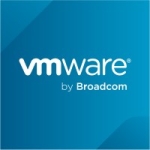What is our primary use case?
Monitoring the application layer for the various application teams. In our organization, we have the centralized monitoring team, and we work with a whole bunch of other teams. The application is trying to help their products get to know their applications monitored to where they need to be.
We have some people that know how to use the product fairly well, but only the older functionalities. Then, we have a lot of newer people that are using different monitoring tools. Some are okay and some do not really know a lot of the functionality, so we have been trying to help get better traction with that.
How has it helped my organization?
In our organization, there is a bit of a learning curve of how to leverage the tool appropriately.
What is most valuable?
Some of the dynamic representation of the application layer. Some of the things that are starting to be interesting is being able to pull in and merge the infrastructure and application data. I am hopeful that it will work as intended.
What needs improvement?
In order for the tool to be successful, at least in our organization, it will need to have more self-serve features for implementation, instrumentation, and then modification of metric data from the APM. At least for us, that is what I am seeing in our neck of the woods, empowering developers to do what they want. If I can give the tools to the developer to self-serve, get them good documentation, and make it really easy for them to use, they will use it.
The tool is not where it needs to be. I do not think a lot of the newer-aged, new-school developers that are coming out of school really know about how to leverage these products. Think about it. You are a computer science major, you just graduated, and a lot of these folks have been playing with some of the new tools in school. So, I think there is a miss for some of these people. Not that the products themselves could stand side-by-side with some of the new ones. There are just more opportunities and I think it is more about trying to get some of the developers empowered and I think this is probably the biggest opportunity for CA and the APM space.
I am hopeful that our people in our organization will like the triage and dynamic mapping.
APM has been good in the Java space, and less good in the everything else. So, Java has been like their bread and butter. .NET instrumentation of the browser timer, used to call it BRTM, I don't know what they call it now, but it is basically getting closer to what the experience is for using the website. It hasn't been that great for the .NET. It is good in Java. Now, I would like to see better stuff in the .NET layer, because that has been more important for our organization. Right now, I am playing with some of the node components, so I am hopeful that some of the newer, hotter, fancier languages that people are using will work right with the node stuff.
The documentation is kind of so-so. We started playing with another product, which is New Relic, and their documentation is actually really good. It is very thoughtful, logically laid out. When you compare it to CA, I think there is an opportunity there.
For how long have I used the solution?
More than five years.
What do I think about the stability of the solution?
We have had some issues with rendering the teamcenter views. It is dependent on a Postgres database. Or, the Postgres Oracle if you want to pay the billion dollars for an Oracle license, but performance is so-so. For the APM stuff, you have to be mindful of what you are instrumenting. How many metrics you are pulling per agents, etc. The team center views are dependent on that Postgres database, which can kind of suck sometimes, or it can be good. It just depends. Our environment gets sort of big, so it is harder.
What do I think about the scalability of the solution?
Scalability is getting better. A lot better than it used to be. Back in the day, it used to be you could have only 10 collectors. Your limit, if you do the math, it is about a million or a million and a half metrics, which sounds like a lot, but it goes fast. They have gotten better about marrying some of those together.
Our instrumentation has changed a lot, so we still can't put together all of the silos that I would like to put together. However, it is better than it used to be.
How is customer service and technical support?
Technical support is okay.
How was the initial setup?
The thing with most of the CA solutions, there is just a lot of infrastructure required. I have done a lot of work for a number of different products and software, and there is always a bunch of servers that I need to set up. At one point, we had 80 servers just to monitor the application layer for the whole organization. That is a lot. Just because the footprints are big. It would be nice to have a smaller footprint, with less of a initial cost for infrastructure, but that is probably why they are investing in SaaS.
Which other solutions did I evaluate?
I have worked with a number of different business software suites for application monitoring, and APM kind of got left behind a long time ago. They have been catching up as far as some of the functionalities as their competitors. You have got AppDynamics, New Relic, and Dynatrace. Some of the things that would differentiate them is just history. They have lost their foothold in the market, at least from my perspective. It is more about empowering the developers to do what they want to do.
What other advice do I have?
Depends on what they are implementing. If it is Java, I think it is a pretty good opportunity to use the product. If it is a .NET, it is not where it needs to be. At least, as far as my knowledge is.
Make friends with your pre-sales guys.
Most important criteria when selecting a vendor: Transparency, honesty, being open, and being helpful. I have had a pretty good relationship with our CA support folks and our account managers, personally. I would say that is a big help. And then being able to be flexible on negotiations for contract stuff because that will kill a deal faster than anything.
Also, just being open about the limitations of the product, as well as the features.
Disclosure: My company does not have a business relationship with this vendor other than being a customer.
















Its good observation that there is no option in CA AMP where we can identify that how our application is performing in Real time. BUT we have good tool in market like . Net vision, Omniture, Blue Tringle .